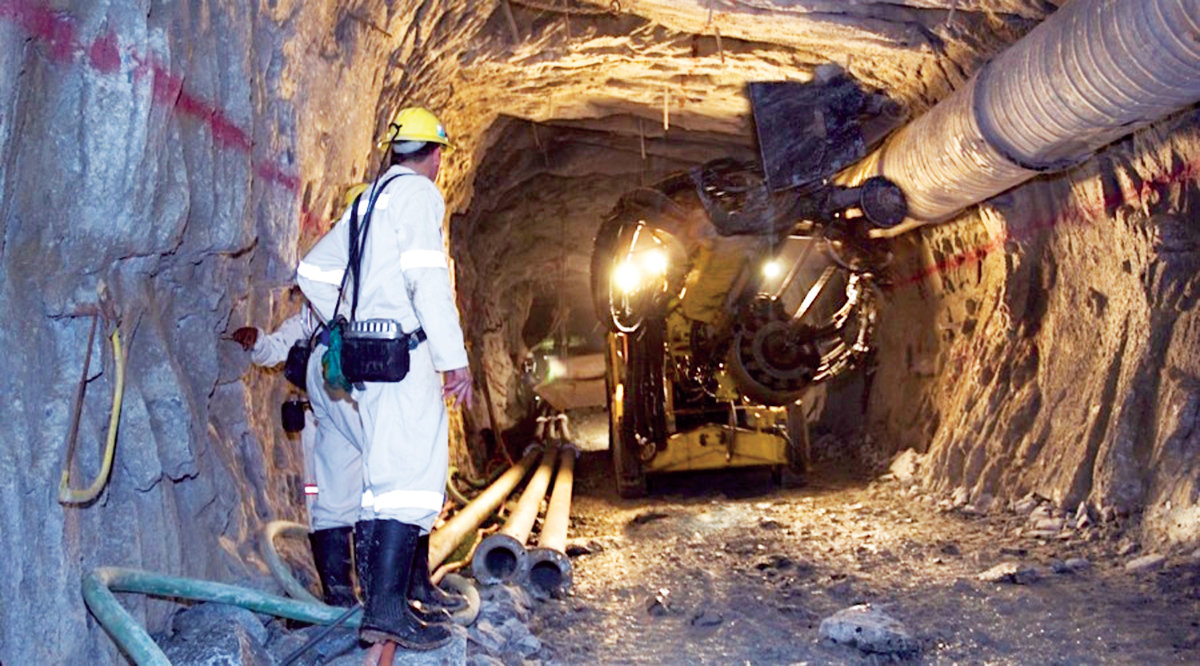CAIRO: The minerals council in South Africa aims to reposition the country’s mining industry as its chief industrial sector.
As a preliminary step towards achieving this, the council seeks a two-fold increase in real investment in the mining sector by 2030.
This target will be made possible through council partnerships with major stakeholders in the creation of a valuable policy, legislative and operating environment.
In line with the country’s National Development Plan, this target aims at enhancing South Africa’s economic growth and its developmental and transformational vision.

The mining and quarrying sector’s contribution to the country’s gross domestic product reached 4.6 percent in 2020, down from 10 percent in 1993. (Supplied)
The mining and quarrying sector’s contribution to the country’s gross domestic product (GDP) reached 4.6 percent in 2020, down from 10 percent in 1993, according to data from Statistics South Africa.
Despite the fall over the years, South Africa is still among top mining destinations in the world.
In addition, its mining sector has a significant positive impact on economic activity, job creation and foreign exchange earnings.
2018 was a year that proved just that. By the end of the year, the mining sector had accounted for $22.5 billion of South African GDP and the employment of an estimated 456,000 workers.
South Africa is well known for its abundance of mineral resources, accounting for a sizable proportion of global reserves and production.
Despite coal, gold, platinum and diamond being the most prominent reserves, the country is also home to other minerals, such as chrome, vanadium and titanium.
The key players in the industry include Anglo American Platinum, Kumba Iron ore, Impala Platinum, Sibanye-Stillwater, Gold Fields, Northam Platinum, Exxaro Resources, ARM, Harmony Gold and Royal Bafokeng Platinum.
Taking into consideration the nature of the mining sector, casualties and fatalities are a key concern that the country has pledged to reduce. Accordingly, the South African mining industry has renewed its commitment to “zero harm” in 2021 by revisiting health and safety issues with all market players.
Overview of South Africa’s most prominent minerals
Coal
Concentrated in the northeast of the country, coal is a crucial mineral in South Africa, having a significant impact on employment rates. Current production rates are sufficient enough to cater to the country’s requirements for the next century. 70 percent of sedimentary rock capacity is consumed locally, with more than 70 percent of the country’s electricity demand generated by coal power.
Platinum
The platinum group metals, also known as PGM, constitute six independent silver-white metals. The South Africa-based Bushveld complex covers 80 percent of PGM mining in the country. PGMs are recyclable in nature and are incorporated in various industrial applications, such as the manufacture of mobile phones and computer hard disks.
Gold
South Africa accounts for 4.2 percent of global gold production, with estimated reserves of 6,000 tons. With as much as 40 percent of the world’s total gold reserves, the Witwatersrand area in South Africa stands as the world’s largest gold resource location, with an assessed production of about 2 billion ounces of gold throughout history. In 2019, total gold sales reached $4.6 billion.
Diamond
South Africa is the fourth largest diamond producer worldwide, with an average annual production of 8.15 million carats. In 2019, total diamond sales reached $850 million.



























